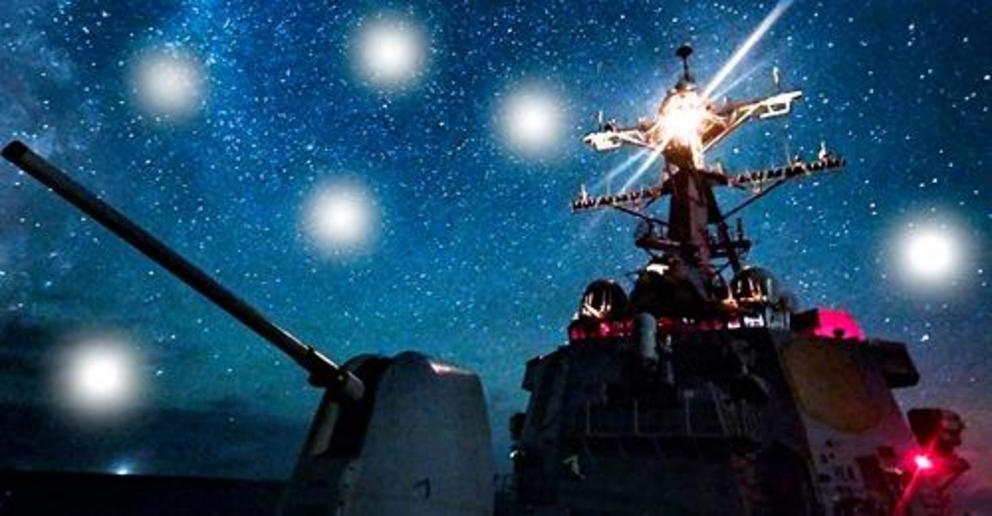Multiple destroyers were swarmed by mysterious 'drones' off California over numerous nights
The disturbing series of events during the summer of 2019 resulted in an investigation that made its way to the highest echelons of the Navy.
In July of 2019, a truly bizarre series of events unfolded around California’s Channel Islands. Over a number of days, groups of unidentified aircraft, which the U.S. Navy simply refers to as ‘drones’ or 'UAVs,' pursued that service's vessels, prompting a high-level investigation.
During the evening encounters, as many as six aircraft were reported swarming around the ships at once. The drones were described as flying for prolonged periods in low-visibility conditions, and performing brazen maneuvers over the Navy warships near a sensitive military training range less than 100 miles off Los Angeles. The ensuing investigation included elements of the Navy, Coast Guard, and the Federal Bureau of Investigation (FBI). The incidents received major attention, including from the Chief of Naval Operations—the apex of the Navy's chain of command.
The following is our own investigation into these events, during which we discovered these events were far more extensive in scale than previously understood.
A Strange Story Emerges
Last year, documentary filmmaker Dave Beaty uncovered initial details about the events, centering on the Arleigh Burke class destroyer USS Kidd (DDG-100). That initial account described a tense encounter, culminating in the deployment of onboard intelligence teams.
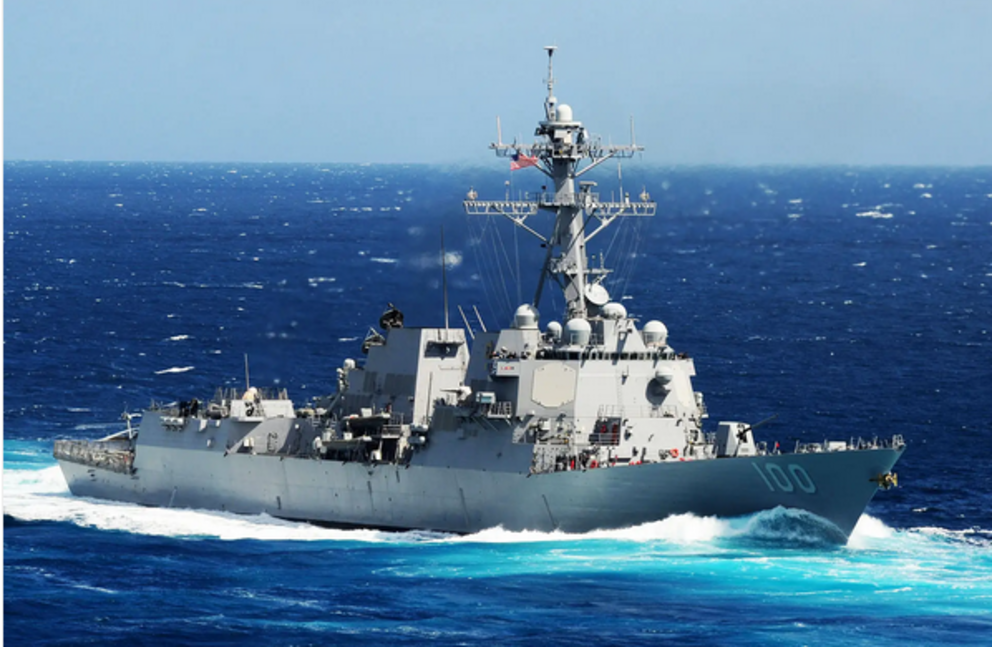
USN. USS Kidd.
New documents significantly expand the public's knowledge of the scope and severity of that incident and reveal others that occurred around the same time. These details come largely from our Freedom of Information Act (FOIA) requests, which resulted in the disclosure of deck logs from the ships involved. Additionally, our investigation utilized hundreds of gigabytes of automatic identification system (AIS) ship location data to forensically reconstruct the position of both military and civilian ships in the area during this strange series of events.
By using the USS Kidd's position as a starting point, we were able to identify several other ships in close proximity to it during the incidents in question, including U.S. Navy destroyers USS Rafael Peralta, USS Russell, USS John Finn, and the USS Paul Hamilton. Subsequent FOIA requests for these ships' records allowed us to build a composite picture of the events as a whole.
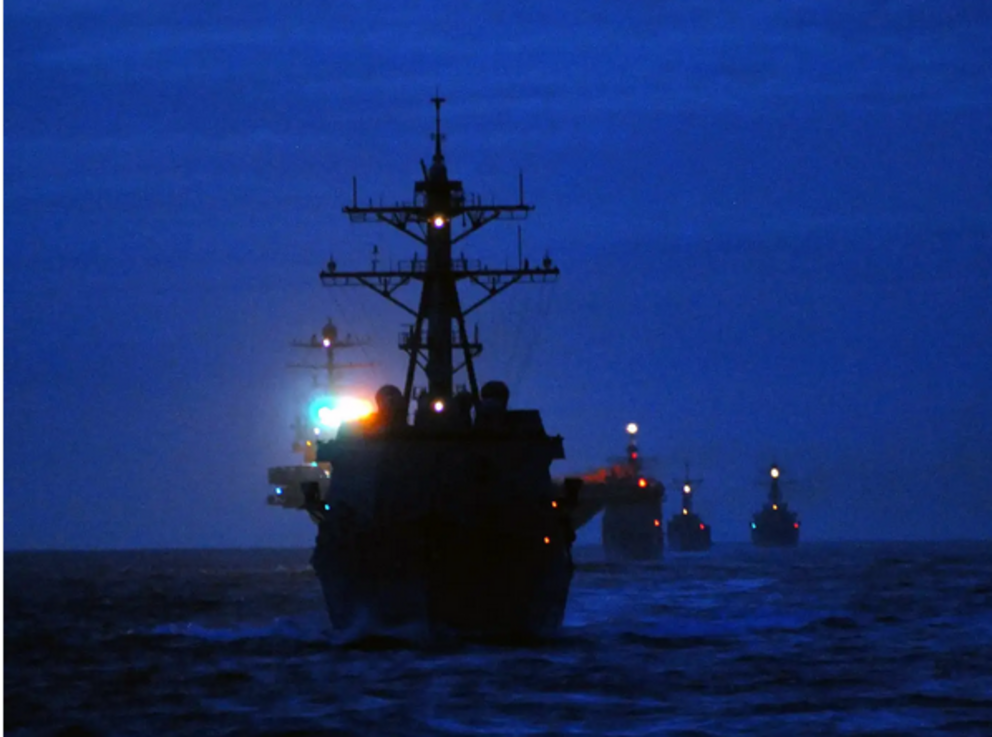
USN
Night One: July 14th, 2019
It appears the incidents began with an initial ‘UAV’ sighting by the USS Kidd around 10:00 PM on the night of July 14th, 2019. Deck logs like the one below provide information about the course and speed of the ship. Additionally, they record any other relevant information about unusual events or changes in the ship's behavior. This log records the first drone sighting:

Navy via FOIA
As previously reported, two drones, typically described as UAVs or unmanned aerial vehicles throughout the logs, were spotted by the Kidd. The Ship Nautical Or Otherwise Photographic Interpretation and Exploitation team, or "SNOOPIE team," refers to an onboard photographic intelligence team tasked with documenting unknown contacts, events of interest, and other objects of interest on short order.

A member of a destroyer's SNOOPIE team with a video camera in hand. USN
Though an Aegis-equipped ship like the USS Kidd has some of the most sophisticated sensors on earth, sailors equipped with consumer-grade cameras act as a kind of nimble spotting and event recording team, able to quickly adapt to changing conditions while providing situational awareness and recording what they see through traditional video and photo methods. You can see a SNOOPIE team in action and one of their products in the video below:
Moments after the sighting on July 14th, the USS Kidd entered into a condition of restricted communications designed to enhance operational security and enhance survivability. This is noted throughout many of the logs as "River City 1." During the events, the ships often engaged “emissions control,” or EMCON, protocols designed to minimize their electronic emissions profile.
Less than 10 minutes after the sighting, the USS Kidd advised the USS Rafael Peralta of the situation. The USS Rafael Peralta logs show that at around 10:00 PM it activated its own SNOOPIE team. They also show that reports of additional sightings were coming in from the USS John Finn.
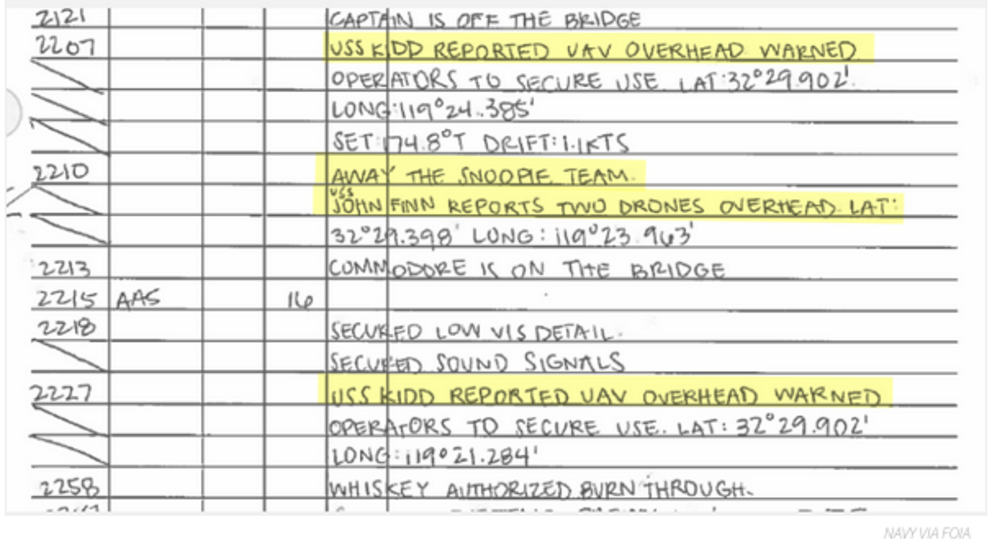
Navy via FOIA
For its part, the logs of the USS John Finn simply reported possible UAV activity, and deactivation of the ship's AIS transponder system. In fact, the selective deactivation of AIS was a challenge for us in reconstructing ship positions, as we sometimes had to rely on cross-comparison of deck logs to locate the position of the ships.
Shortly after the initial sighting, a red flashing light was spotted.

Navy via FOIA
Among the more dramatic entries in the logs from this incident is the one below from the USS Rafael Peralta, describing a white light hovering over the ship's flight deck.
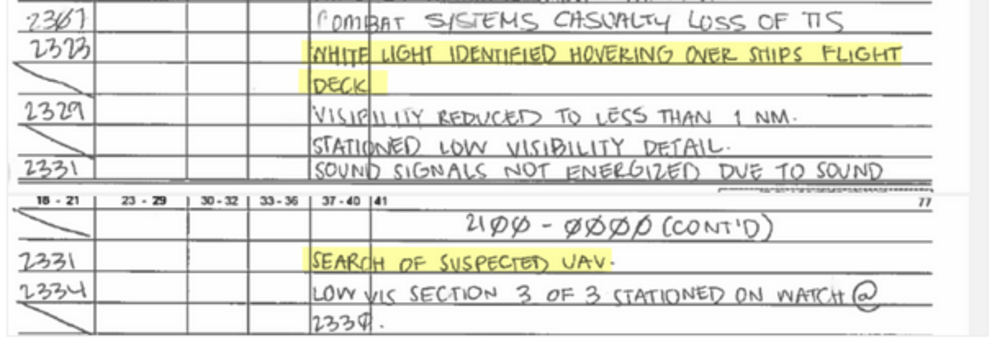
Navy via FOIA
The log reflects that the drone managed to match the destroyer's speed with the craft moving at 16 knots in order to maintain a hovering position over the ship’s helicopter landing pad. To further complicate what was already a complex maneuver, the drone was operating in low visibility conditions (less than a nautical mile) and at night.
By this point, the encounter had lasted over 90 minutes—significantly longer than what commercially available drones can typically sustain.
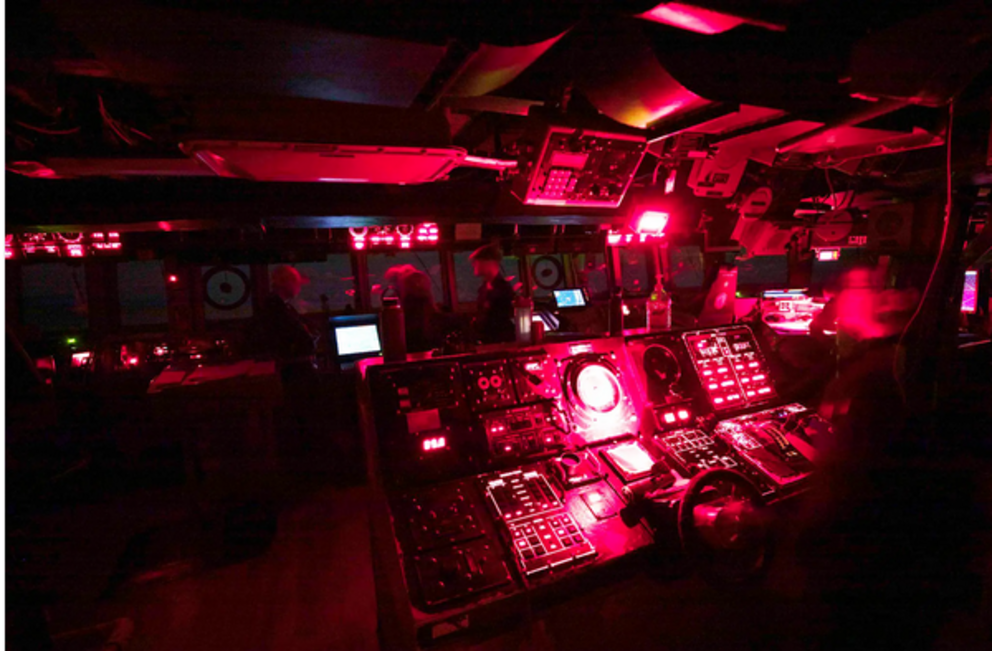
The red-lit bridge of an Arleigh Burke class destroyer at night. USN
According to AIS data, few civilian ships were in the immediate vicinity. AIS is not strictly mandatory in all cases, and can be turned off, so it is possible other vessels could have been nearby, as well. The civilian bulk carrier Bass Strait, cited later in the investigation, was situated towards the northern edge of the encounter area. A Liberian-flagged oil tanker, the Sigma Triumph, was just south of the position of the three destroyers. The ORV Alguita, a 50-foot catamaran, briefly a subject of interest in the official investigation that would come, was just off the western tip of San Clemente Island. Importantly, San Clemente Island is owned by the Navy and is frequently used for military training and testing purposes.
The following map shows maritime traffic around the ports of Los Angeles and San Diego on July 14th. The position of each ship at 10:00 PM is marked with a black indicator, and the track of the ship before and after the incident time is marked with colored dots. The approximate positions of each cluster of ships are numerically marked.
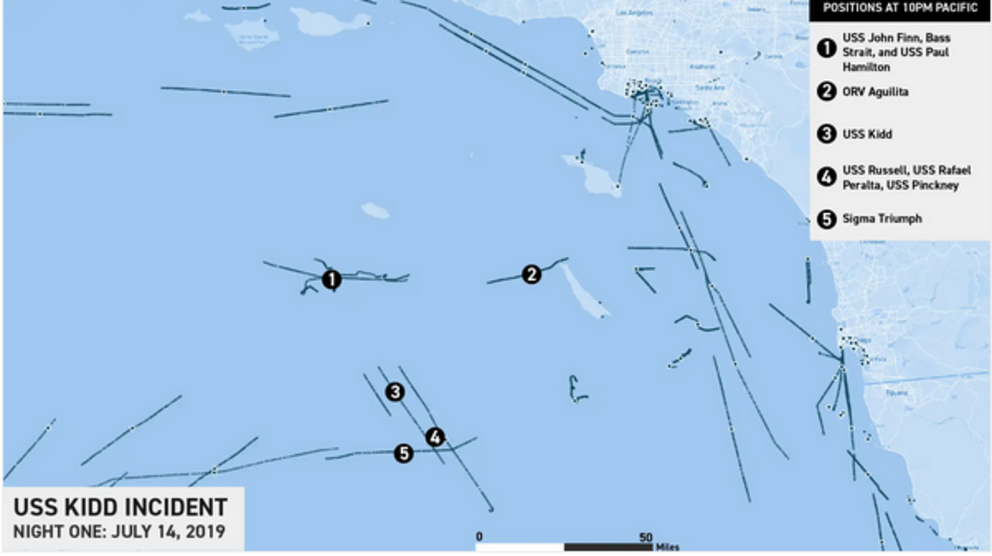
Author's illustration
The two groups of destroyers and the ORV Alguita form a roughly triangular shape with each side approximately 50 nautical miles long, containing an area just over 1000 square nautical miles. The Bass Strait and the USS Paul Hamilton were in relatively close proximity at marker one. The ORV Alguita was off the northern tip of San Clemente Island at marker two. The USS Kidd was at marker three, and the formation of three destroyers was at marker four. The tanker Sigma Triumph was just to the west of the formation of three destroyers, at marker five.
For the rest of this article please use source link below

